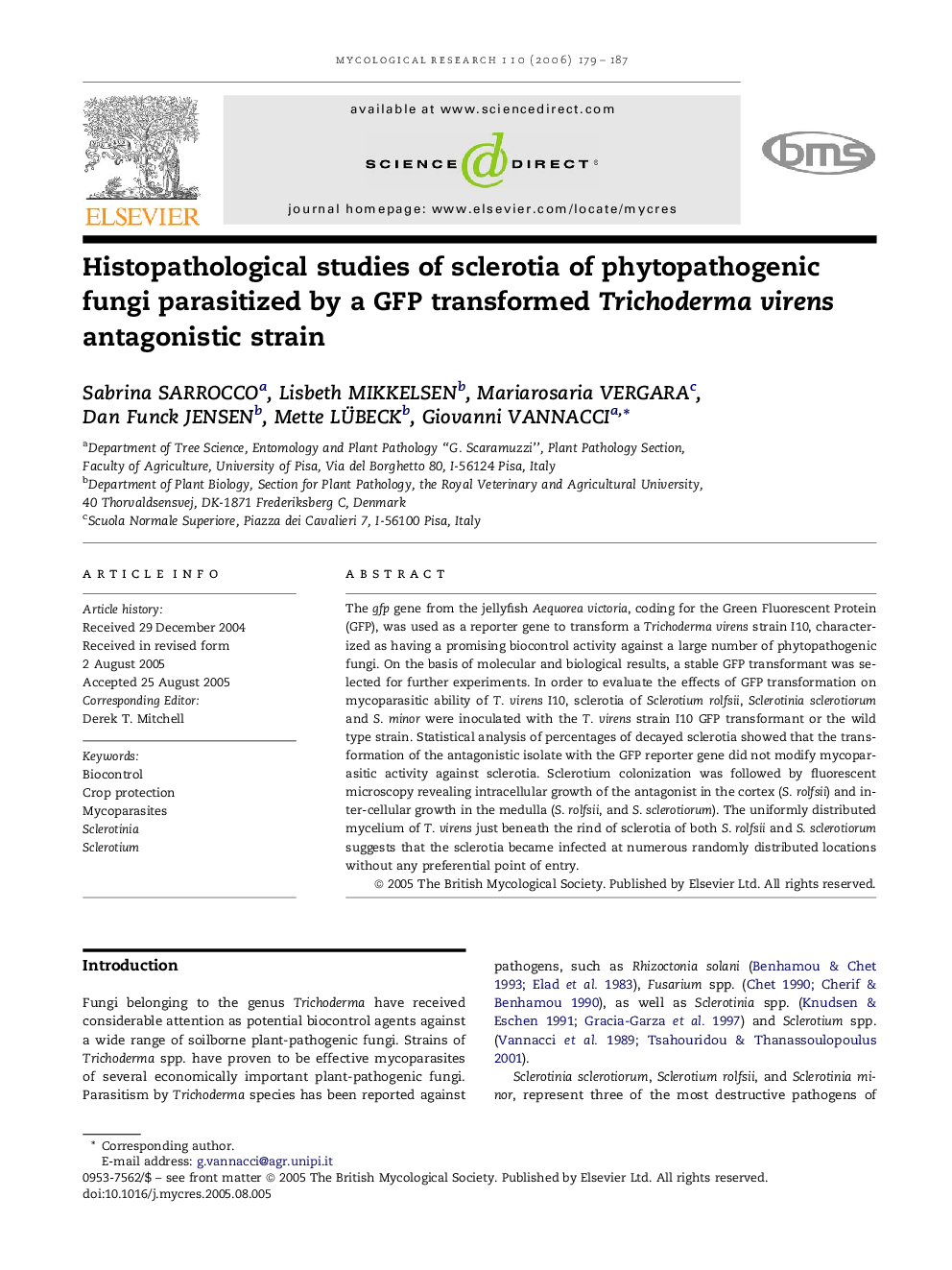| Article ID | Journal | Published Year | Pages | File Type |
|---|---|---|---|---|
| 4358215 | Mycological Research | 2006 | 9 Pages |
The gfp gene from the jellyfish Aequorea victoria, coding for the Green Fluorescent Protein (GFP), was used as a reporter gene to transform a Trichoderma virens strain I10, characterized as having a promising biocontrol activity against a large number of phytopathogenic fungi. On the basis of molecular and biological results, a stable GFP transformant was selected for further experiments. In order to evaluate the effects of GFP transformation on mycoparasitic ability of T. virens I10, sclerotia of Sclerotium rolfsii, Sclerotinia sclerotiorum and S. minor were inoculated with the T. virens strain I10 GFP transformant or the wild type strain. Statistical analysis of percentages of decayed sclerotia showed that the transformation of the antagonistic isolate with the GFP reporter gene did not modify mycoparasitic activity against sclerotia. Sclerotium colonization was followed by fluorescent microscopy revealing intracellular growth of the antagonist in the cortex (S. rolfsii) and inter-cellular growth in the medulla (S. rolfsii, and S. sclerotiorum). The uniformly distributed mycelium of T. virens just beneath the rind of sclerotia of both S. rolfsii and S. sclerotiorum suggests that the sclerotia became infected at numerous randomly distributed locations without any preferential point of entry.
